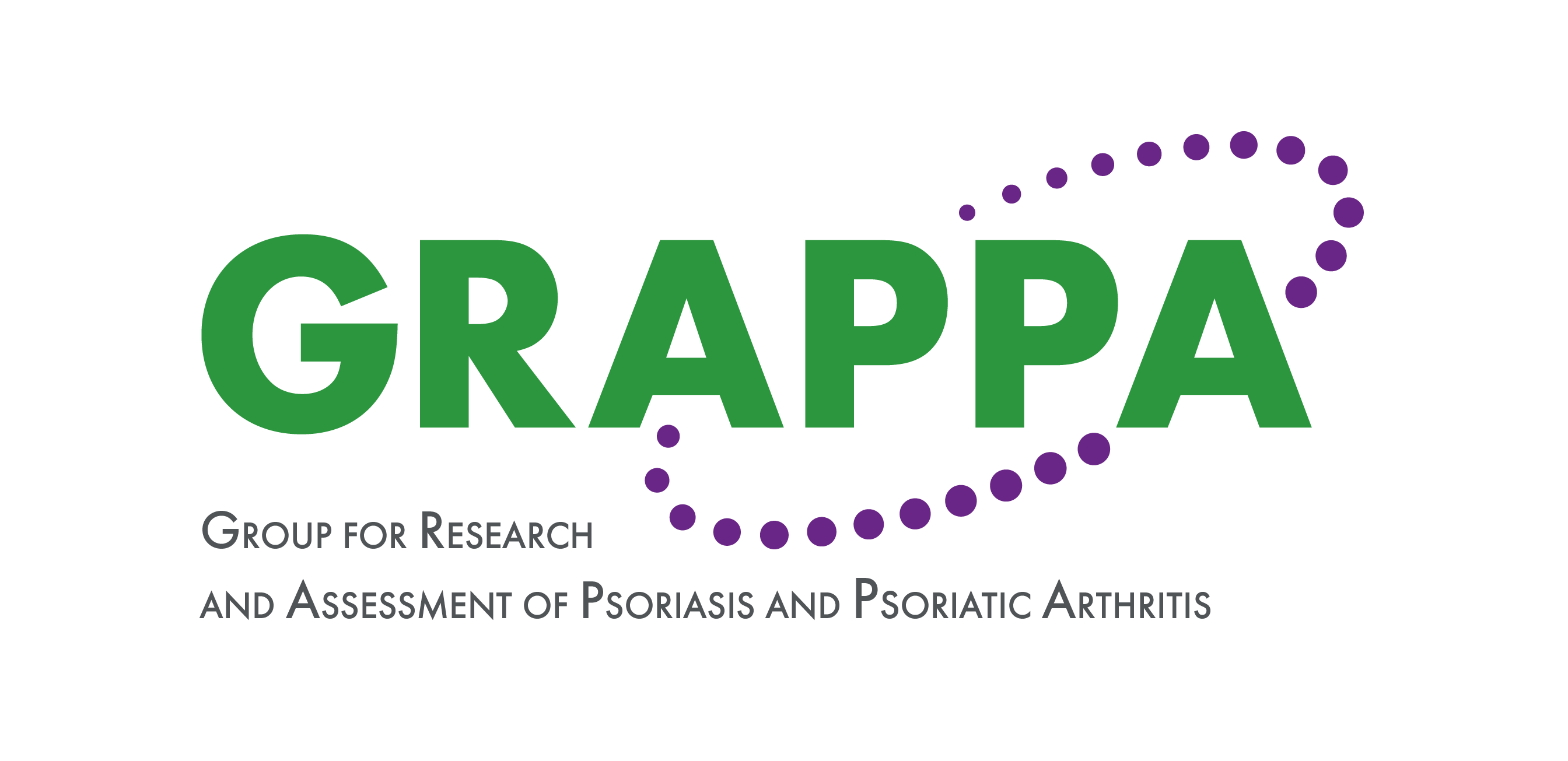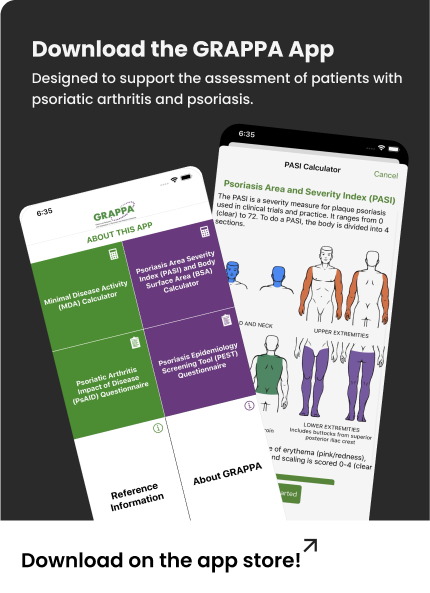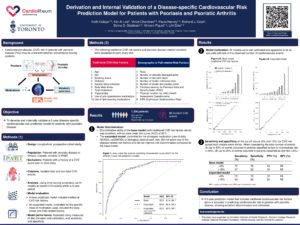Derivation and Internal Validation of a Disease-specific Cardiovascular Risk Prediction Model for Patients with Psoriatic Disease
Authors
Keith Colaco
University of Toronto
Ker-Ai Lee
University Of Waterloo
Vinod Chandran
University Of Toronto
Paula Harvey
University Of Toronto
Richard Cook
University Of Waterloo
Dafna Gladman
University Of Toronto
Vincent Piguet
University Of Toronto
Lihi Eder
University Of Toronto
Keywords
axial psoriatic arthritis; axial spondyloarthritis
Background: Patients with psoriatic arthritis and psoriasis, collectively termed psoriatic disease (PsD), have an increased risk of cardiovascular disease. We derived and internally validated a 5-year disease-specific cardiovascular risk prediction model for patients with PsD.
Methods: Participants from a longitudinal PsD cohort without a prior history of cardiovascular events were included. Using time-varying covariates, we fit models to predict cardiovascular events within 5 years of their measurement, with each individual contributing possibly multiple non-overlapping 5-year periods. The composite event included any of the following: angina, myocardial infarction, congestive heart failure, transient ischemic attack, stroke, revascularization procedures and cardiovascular death. A base model included ten traditional cardiovascular risk factors, with eleven disease-related risk factors considered including measures of musculoskeletal and skin inflammation, inflammatory laboratory markers and patient reported outcomes. These additional disease-related risk factors were assessed by adding them to the base model to create expanded models, controlled for PsD therapies. Variable selection was performed using penalized regression via the LASSO and 10-fold cross-validation. Model performance was assessed using measures of discrimination and calibration, and sensitivity and specificity.
Results: A total of 1,336 patients (92% with PsA), followed between 1992 and 2020, were analyzed (mean age 48 ± 12.9 years, 46.8% female). During a mean follow-up of 6.8 years, 85 (6.4%) patients developed incident cardiovascular events. Discriminative ability of the base model (with traditional cardiovascular risk factors alone) was excellent, with an AUC of 85.5 (95% CI 81.9-89.1). The 5-year risk prediction models obtained by the LASSO did not select any of the 11 disease-specific risk factors. In a sensitivity analysis excluding cardiovascular treatments, the number of damaged joints was selected in the expanded model (AUC 85.5, 95% CI 82.0-89.1), but the expanded model did not improve risk discrimination compared to the base model. All models were well calibrated and appeared to be an accurate estimate of the observed number of cardiovascular events. Sensitivity and specificity of the 10% cut-off point for cardiovascular risk was 49% and 92%, respectively. When considering the total number of cardiovascular events, depending on the model, up to 53% of events occurred in patients who were classified as ‘low risk’ (<10%).
Conclusions: Traditional cardiovascular risk factors alone are effective in predicting cardiovascular risk in patients with PsD. A risk score based on these factors performed well, indicating excellent discrimination between patients with and without a cardiovascular event.


